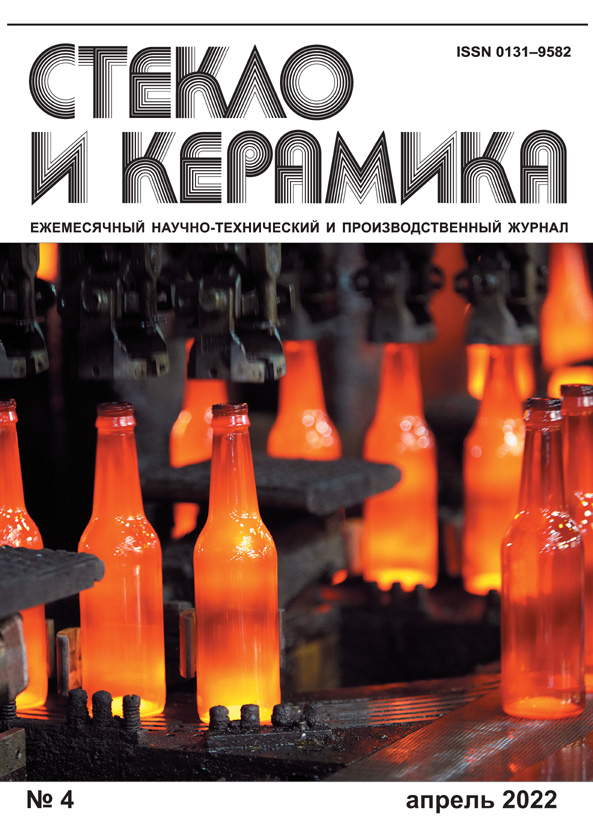The glass-crystalline ceramic materials in SiO2–Al2O3–RO (RO–MgO, SrO, BaO and their combinations) systems have been synthesized by the sol-gel method. The factors influencing on the sol-gel formation process are revealed. The effect
of the composition and temperature-time modes of heat treatment on the crystallization properties of gels, phase transformations, phase composition, granulometry and shape of the resulting particles has been studied. The nature of phase transformations in powders is revealed depending on the temperature-time conditions of heat treatment. It is shown
that the dominant crystalline phases, depending on the composition, are anorthites or their solid solutions, their formation temperatures have been established: hexagonal celsian is formed at a temperature of 1350 °C, monoclinic strontium
anorthite – at 1400 °C, cordierite – at 1450 °C. The influence of pressing and heat treatment conditions on the physic-mechanical, dielectric and thermal properties of the obtained materials is investigated.
The synthesized glass-ceramics with low dielectric constant and dielectric loss tangent, high deformation temperatures (above 1500 °C) is a promising replacement for the spodumene-eucryptite and cordierite sitalls currently used as radio-transparent materials, the disadvantage of which is insufficiently high operating temperatures (not higher 900 – 1100 °C).


